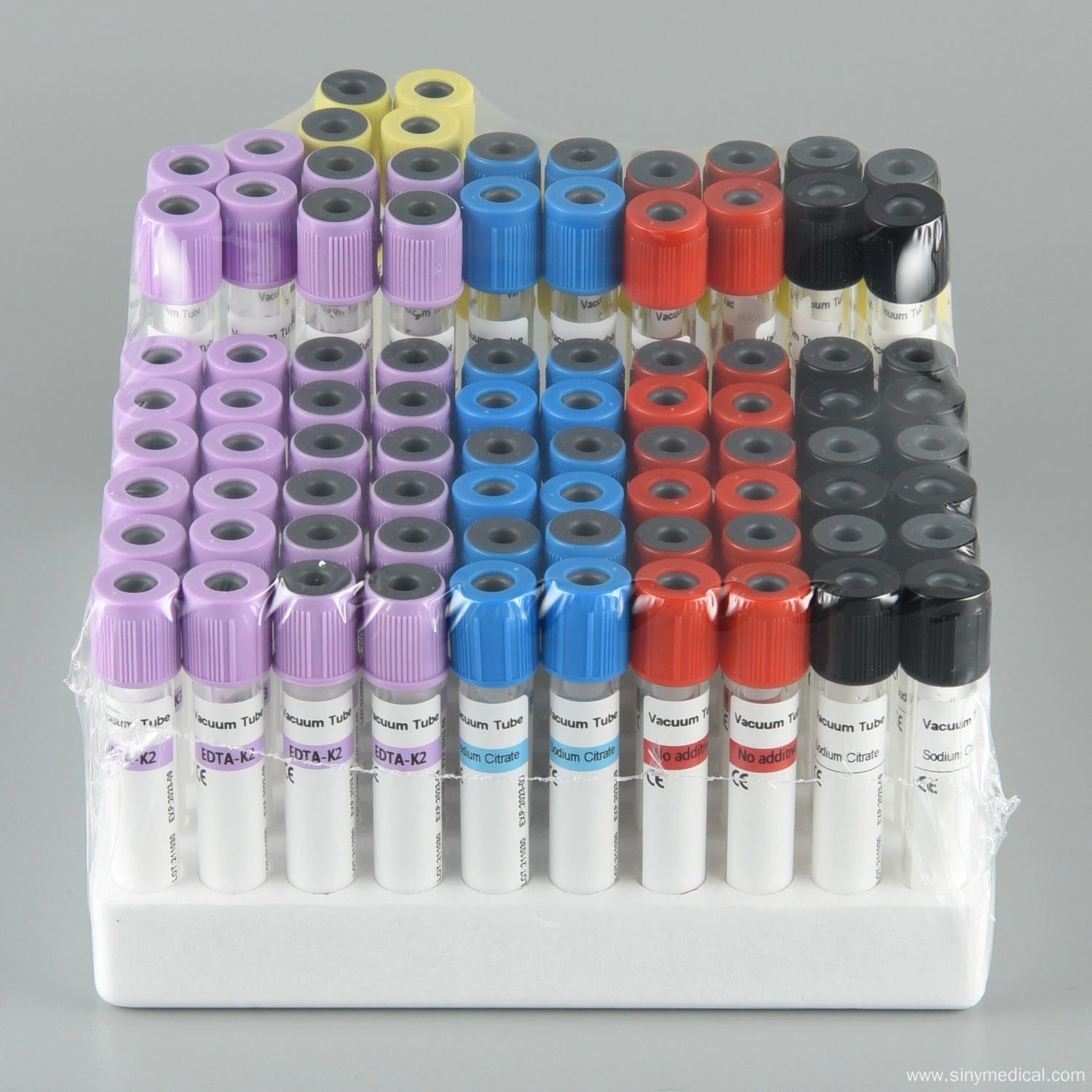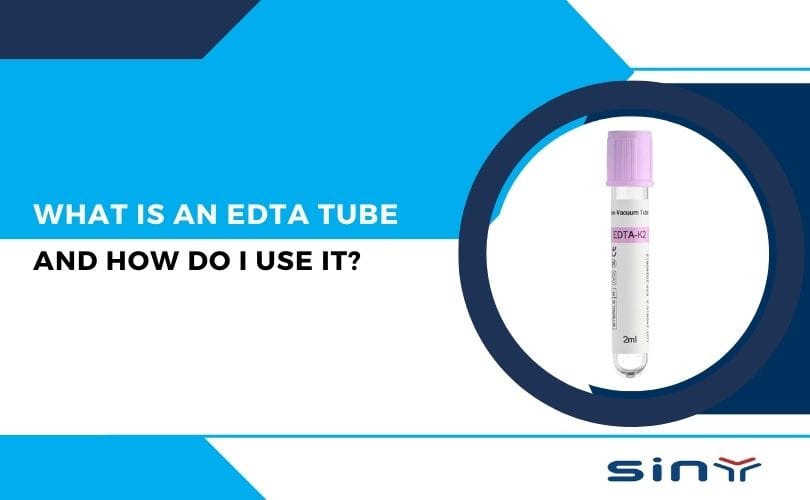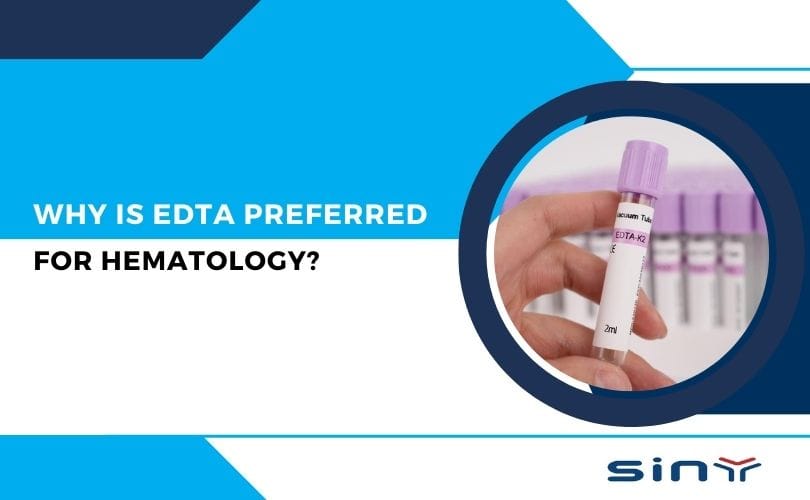In the realm of medical diagnostics and research, the accuracy and reliability of test results hinge on the quality of blood samples collected and processed. Among the various types of blood collection tubes, EDTA tubes containing separator gel have emerged as a critical tool. These tubes are widely used in clinical molecular diagnostics, hematology testing, and high-precision laboratory research due to their dual functionality of anticoagulation and sample separation. This blog delves into the principles, advantages, applications, and practical considerations of these tubes, providing a comprehensive understanding of their significance.
Basics of EDTA and Separator Gel
EDTA Anticoagulant
EDTA (Ethylenediaminetetraacetic acid) is a powerful chelating agent that binds calcium ions in the blood, preventing clotting. This property makes it an essential additive in blood collection tubes. The benefits of EDTA include:
- Keeping blood fluid before testing: Ensures that the blood remains in a liquid state, facilitating accurate analysis.
- Preserving the morphology of blood cells: Maintains the structure and integrity of blood cells, which is crucial for certain tests.
- Commonly used in complete blood count (CBC), blood typing, and HbA1c testing: These tests rely on the anticoagulant properties of EDTA to provide reliable results.
For more information on EDTA tubes, visit EDTA Tubes for Blood Collection.

Separator Gel
Separator gel is an inert substance with a density between plasma and blood cells. During centrifugation, it moves into the interface between plasma and cells, creating a stable barrier. The main roles of separator gel include:
- Physically separating plasma from cells: Ensures that plasma is free from cellular contamination.
- Preventing cell debris or by-products from contaminating plasma: Maintains the purity of the plasma sample.
- Maintaining sample stability for storage and transport: Ensures that the sample remains stable over time, even during transportation.
When combined in a single evacuated tube, EDTA and separator gel create a dual-function system that both prevents clotting and ensures efficient sample separation.
Working Principle: Dual Protection Mechanism
The EDTA tubes containing separator gel operate through a dual protection mechanism:
- Anticoagulation: Once blood enters the tube, EDTA immediately binds calcium ions and prevents clot formation.
- Centrifugation: Under centrifugation, blood separates into plasma and cellular components.
- Barrier Formation: The separator gel, with its intermediate density, positions itself between plasma and cells to form a physical barrier.
- Sample Stability: Plasma remains isolated from cells, ensuring purity and reducing the risk of interference.
This mechanism makes such tubes particularly suitable for molecular testing and long-term sample preservation.
Advantages of EDTA Tubes with Separator Gel
Improved Sample Quality
The separator gel prevents cellular contamination, reduces hemolysis, and ensures cleaner plasma for analysis. This is crucial for tests that require high sample purity.
Higher Test Accuracy
In molecular diagnostics, inhibitors like hemoglobin or RNases can interfere with nucleic acid amplification. The gel barrier minimizes these risks, improving the sensitivity and reliability of PCR and related methods.
Simplified Workflow
Once centrifuged, plasma can be directly extracted without additional separation steps, saving time in laboratories. This streamlined process enhances efficiency in high-throughput testing environments.
Safe Storage and Transport
The gel barrier maintains sample stability during transportation, making it ideal for long-distance or centralized testing. This is particularly important for samples that need to be sent to specialized laboratories.
Wide Application Range
These tubes are suitable for clinical diagnostics, routine hospital testing, and research settings where plasma purity is critical. Their versatility makes them a valuable tool in various medical and scientific contexts.
For a detailed look at the products available, check out EDTA Tube Products.
Application Fields of Separator Gel EDTA Tubes
These tubes aren’t just for one lab test—they’re incredibly versatile:
Hematology Testing: Maintains cellular integrity for accurate blood counts.
Molecular Diagnostics: Provides clean plasma for PCR, RNA/DNA extraction, sequencing.
Clinical Laboratory Testing: Ideal for high-throughput automated testing systems.
Scientific Research: Offers reliable plasma for protein studies, genomics, and biomarker analysis.
For labs looking to stock such consumables, visit EDTA Tube Product Category.
Precautions for Use
Gentle Mixing
Invert the tube 5–8 times after collection. Avoid vigorous shaking, which may cause hemolysis and compromise sample quality.
Centrifugation Settings
Follow recommended speed and duration to ensure proper gel barrier formation. Incorrect settings can lead to incomplete separation and contamination.
Storage Conditions
Choose refrigeration or freezing based on test requirements. Avoid repeated freeze-thaw cycles, which can degrade the sample.
Correct Usage
This tube is designed for plasma testing. For serum testing, a serum separator tube with clot activator must be used. Using the wrong type of tube can lead to inaccurate results.
For more detailed guidelines, visit Purple Top Blood Collection Tube.
Summary
EDTA tubes containing separator gel combine anticoagulation and separation into one solution, making them indispensable for modern diagnostics and research. They not only enhance accuracy and efficiency but also guarantee sample stability during storage and transport. With the growing demand for molecular diagnostics and precision medicine, the role of these tubes in laboratories and hospitals will continue to expand.
For more information about our company and products, visit About Us and explore our YouTube Channel for additional insights. You can also check out our products on Made-in-China.
By understanding the principles and benefits of EDTA tubes with separator gel, healthcare professionals and researchers can make informed decisions that enhance the quality and reliability of their work.






